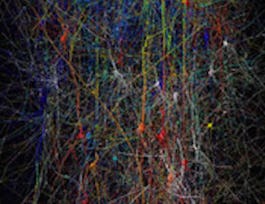The final course covers more advanced and optional features that might be configured in a Cortex-M system. These features could help with particular project requirements such as security and performance. Not all of these topics might be relevant for any given Cortex-M project, so feel free to pick and choose which topics, if any, apply to you.



Advanced Armv8-M Features
This course is part of Arm Cortex-M Architecture and Software Development Specialization



Instructors: Solomon Tucker
Sponsored by BrightStar Care
2,551 already enrolled
(17 reviews)
Recommended experience
Details to know

Add to your LinkedIn profile
8 assignments
See how employees at top companies are mastering in-demand skills

Build your subject-matter expertise
- Learn new concepts from industry experts
- Gain a foundational understanding of a subject or tool
- Develop job-relevant skills with hands-on projects
- Earn a shareable career certificate


Earn a career certificate
Add this credential to your LinkedIn profile, resume, or CV
Share it on social media and in your performance review

There are 9 modules in this course
The final course covers more advanced and optional features that might be configured in a Cortex-M system. These features could help with particular project requirements such as security and performance. Not all of these topics might be relevant for any given Cortex-M project, so feel free to pick and choose which topics, if any, apply to you.
What's included
1 video
This module describes the mechanism in the Armv8-M architecture to to share resources like peripherals between different threads and processors in an M-profile system.
What's included
7 videos1 reading1 assignment
This module is aimed to be a top-level module on caches for M-profile systems that covers fundamental cache terminology all the way through to configuring and utilising the cache for improved performance in M-profile systems involving more complex implementations like Cortex-M7 and Cortex-M55.
What's included
19 videos1 reading1 assignment
The DSP Extension is an optional feature for Armv8-M Mainline implementations that allows allows DSP operations to be executed by a dedicated instructions.
What's included
5 videos1 reading1 assignment
The Floating-point Extension is an optional feature for Armv8-M Mainline implementations that allows allows floating-point operations to be executed by a dedicated floating-point unit (FPU) hardware.
What's included
10 videos2 readings1 assignment
This module is about the SysTick Timer, which is mandatory in Armv7-M and Armv8-M Mainline implementations, and optional in Armv6-M and Armv8-M Baseline implementations.
What's included
3 videos1 reading1 assignment
This module is about the optional Security Extension in Armv8-M Mainline implementations. The Security Extension is also an option for Armv8-M Baseline implementations.
What's included
10 videos1 reading1 assignment
This module describes the Pointer Authentication Code (PAC) and Branch Target Identification (BTI) Extension introduced as a part of Armv8.1-M architecture.
What's included
10 videos1 reading1 assignment
This module is an essential foundation module for MVE training course. It introduces the story, architecture features, software and tools support for MVE.
What's included
16 videos3 readings1 assignment
Instructors



Offered by
Why people choose Coursera for their career




Recommended if you're interested in Computer Science

Edge Impulse

University of Michigan

Hebrew University of Jerusalem

Open new doors with Coursera Plus
Unlimited access to 10,000+ world-class courses, hands-on projects, and job-ready certificate programs - all included in your subscription
Advance your career with an online degree
Earn a degree from world-class universities - 100% online
Join over 3,400 global companies that choose Coursera for Business
Upskill your employees to excel in the digital economy








